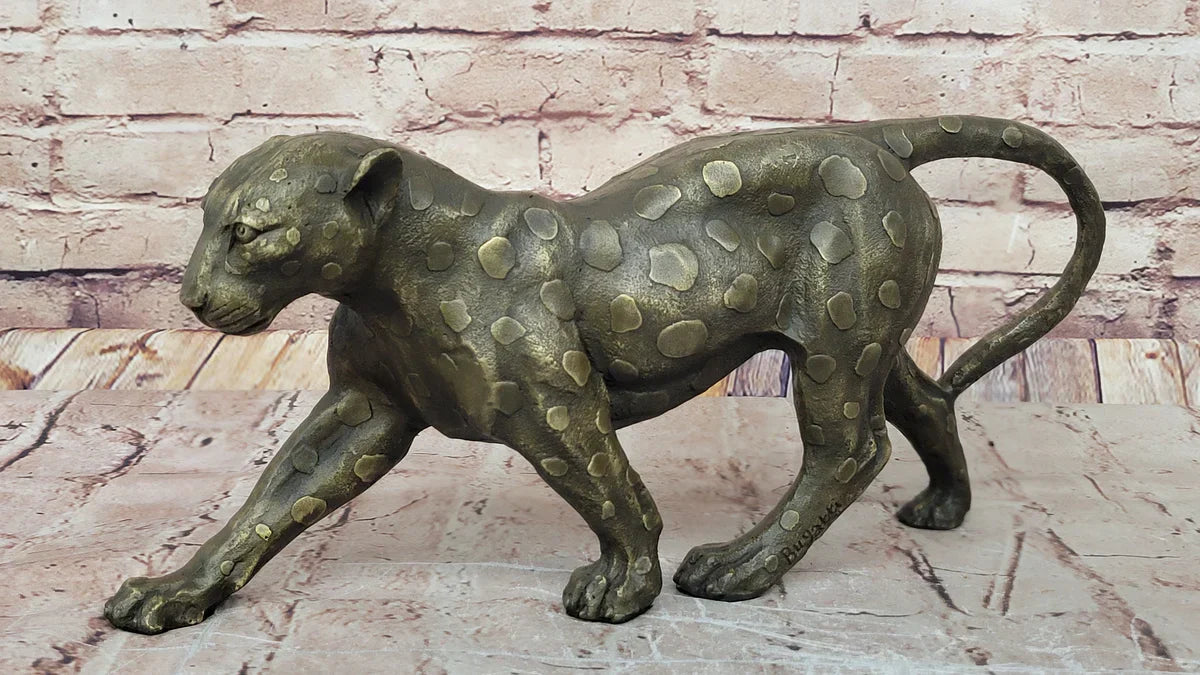Bronze has long been a cherished medium in the world of sculpture, valued not just for its strength and durability but also for its aesthetic richness. The unique charm of bronze lies in its ability to capture intricate details and to evolve, both in texture and color. But these qualities don't happen by accident. They are carefully cultivated by artists through a range of techniques.
In this blog, we explore how artists manipulate color and texture in bronze to enhance the sculptural beauty of their work, and what these choices mean for the viewer.
Understanding the Bronze
Bronze is primarily an alloy of copper and tin, though artists often use variants with additional metals like aluminum, manganese, or silicon to achieve specific properties. The alloy is favored for casting because of its excellent fluidity, strength, and resistance to corrosion.
However, it's not just the form of the sculpture that captivates the eye. The surface treatment, through color and texture, adds another layer of depth and emotion to the piece.
Color and Texture in Bronze Sculpture
The Importance of Patination
The process of bronze sculpture casting involves applying layers of chemical solutions to a bronze surface to achieve a variety of colors, textures, and patterns. Artists typically use solutions containing compounds such as ferric nitrate, cupric nitrate, or potassium sulphide. By varying the concentration, application method (brushing, spraying, immersion), and the temperature of the metal during application, a wide palette can be achieved, from rich earth tones and traditional greens to vibrant blues and reds.
Hot Patina: The bronze is heated, usually with a blowtorch, and chemicals are applied in layers, each reacting with the underlying metal to form metal oxides. The result is a permanent coloration deeply fused into the surface.
Cold Patina: Suitable for subtle tones, chemicals are applied at room temperature, sometimes resulting in less dramatic effects but with finer gradations.
Creating and Emphasizing Texture
The bronze sculpture's texture is not just a matter of appearance. It engages the sense of touch and enhances realism or abstraction. Sculptors begin shaping texture in the wax model, where surface details like skin, fabric, or terrain can be carved or impressed.
After casting, the bronze undergoes chasing, where tools are used to refine the details, remove mold lines, and sharpen features. Artists may use chisels, scrapers, or rotary tools to add lines, roughness, or patterns.
Polishing and Buffing: Polished sections catch light, contrasting with matte or rougher areas for dynamic interplay.
Surface Etching: Using acids or abrasives to selectively wear the bronze for a weathered or aged effect.
Once color and texture are achieved, the bronze is often sealed with wax or lacquer. This locks in the patina, enhances luster, and protects the sculpture from environmental damage.
Combining Color and Texture for Maximum Impact

In bronze sculpture, the interplay between color and texture is where the true magic happens. While each element, patina, and surface treatment can enhance a piece on its own, it’s the intentional combination of the two that creates a powerful visual and emotional impact. Artists strategically use this synergy to guide the viewer’s eye, evoke specific moods, and convey deeper meaning within their work.
Contrasting textures, such as a smooth, polished face against a rough, textured background, help define form and emphasize certain elements of the sculpture. These variations don’t just add visual interest. They create a rhythm across the surface, drawing the eye to areas the artist wants to highlight. For instance, polished sections tend to catch and reflect light, naturally pulling the viewer’s attention, while darker or matte areas recede, creating depth and dimensionality.
Longevity and Maintenance
Bronze is renowned for its exceptional longevity, with sculptures lasting hundreds or even thousands of years when properly cared for. Its natural resistance to corrosion makes it ideal for both indoor and outdoor art, but that doesn’t mean it's maintenance-free. Over time, exposure to air, moisture, salt, pollutants, and acidic rain can gradually alter the surface, often forming a patina that may or may not be intended by the artist.
Regular Dusting (Indoor Sculptures): Use a soft, dry microfiber cloth to remove dust and prevent buildup.
Apply Protective Wax: Use a clear, museum-quality wax (like Renaissance Wax) every 6–12 months indoors, and every 3–6 months for outdoor sculptures.
Gentle cleaning (Outdoor Sculptures): Wash with distilled water and a mild, non-abrasive soap using a soft cloth or sponge, never harsh chemicals or scrub pads.
Conclusion
Bronze sculpture techniques, such as casting, are far more than static processes. Through the skillful use of color (patina) and texture (surface manipulation), artists bring emotion, energy, and narrative into their work. These elements enhance the sculptural beauty, inviting viewers not just to look, but to feel, to wonder, and to connect. Whether you're an artist, collector, or enthusiast, understanding these techniques allows you to appreciate bronze art on a deeper level, recognizing the labor, chemistry, and artistry that go into every nuanced surface. If you’re looking to explore or acquire an exceptional collection of bronze sculptures, visit our website, European Bronze.

